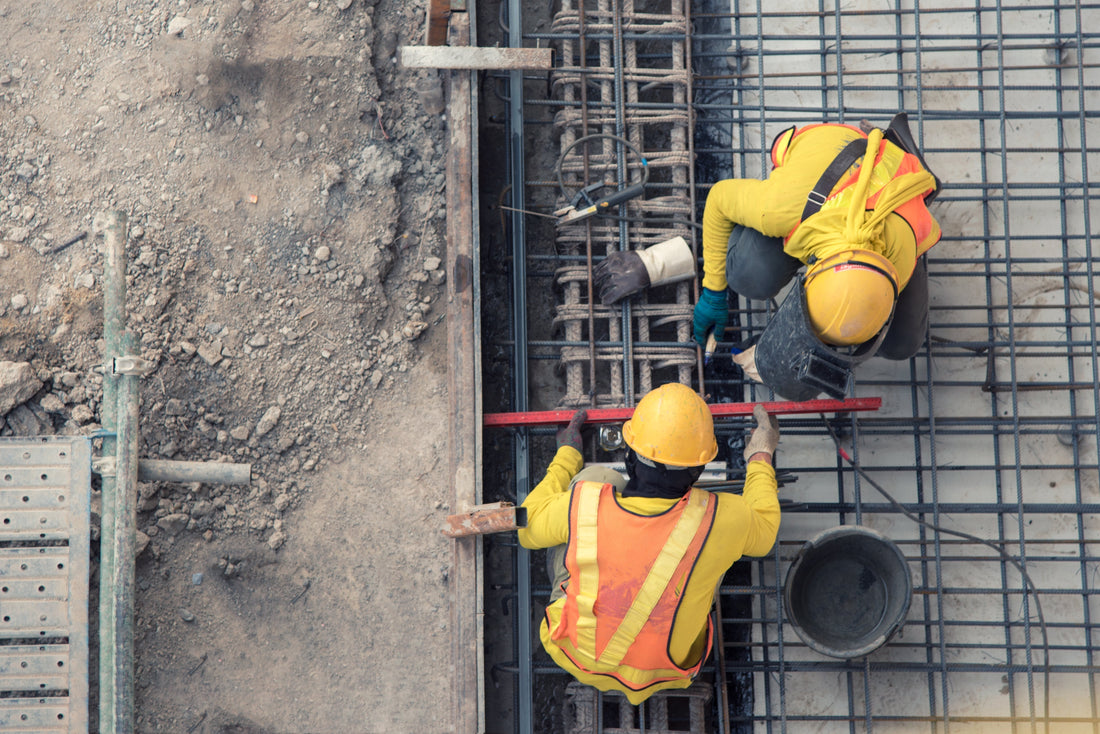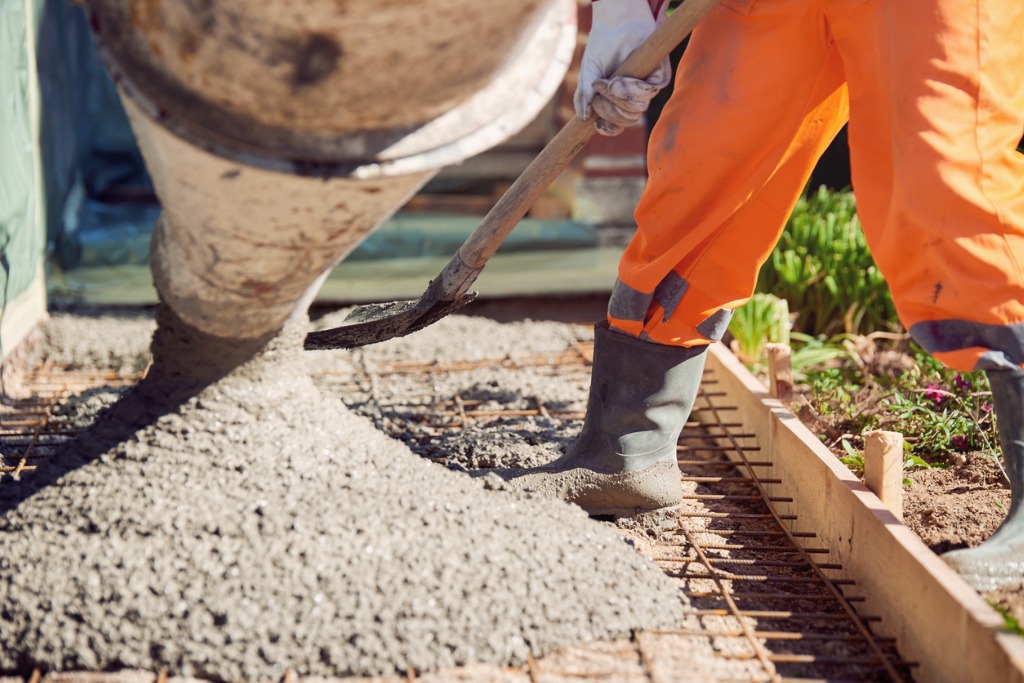All About Concrete: Essential Services for Residential and Commercial Building And Construction
Concrete is a critical element in the construction market, offering both business and property needs. Its distinct make-up provides stamina and resilience, making it appropriate for numerous applications. From fundamental job to attractive finishes, concrete plays a significant function in improving architectural integrity and visual appeal. Yet, there are lots of nuances to consider when dealing with this versatile material. The exploration of its crucial solutions discloses a lot more than fulfills the eye.
Recognizing the Essentials of Concrete
Concrete, a basic product in building, is composed of a combination of concrete, water, aggregates, and ingredients. This versatile substance is known for its versatility, durability, and stamina, making it a preferred option for numerous applications. The cement acts as a binding representative, while aggregates provide bulk and toughness. Water is necessary for the hydration process, which transforms the mix right into a strong mass. Additives can customize the residential or commercial properties of concrete, such as setting time and workability, permitting customized remedies to particular project needs.
Concrete can be cast right into different shapes and sizes, making it ideal for every little thing from pathways to high-rises. Its capability to endure compressive pressures makes it ideal for structural parts. Its thermal mass contributes to power efficiency in structures. Understanding these fundamental aspects of concrete is essential for anyone involved in the construction sector, as it lays the groundwork for successful job execution.

Crucial Concrete Solutions for Foundations
Structures play a significant function in the stability and long life of any kind of framework, and concrete solutions are essential in their building and construction. A reliable concrete foundation assurances that the weight of the building is equally distributed, lessening the danger of shifting or settling. Essential solutions include website preparation, in which the ground is rated and compressed to create a strong base. Concrete pouring follows, using high-grade materials to form a resilient piece or footings designed to endure different environmental conditions.
Support, generally with steel rebar, includes stamina to the foundation, preventing cracks and architectural failures. Proper treating methods are likewise important, allowing the concrete to accomplish its suitable strength with time. Additionally, waterproofing actions can be executed to secure against moisture invasion, which is crucial for keeping the integrity of the structure. These crucial concrete solutions jointly add to a durable structure, forming the backbone of any successful building job.
Driveway Setup and Maintenance Options
In the domain of driveway installation, numerous materials such as concrete, asphalt, and crushed rock provide distinctive benefits and visual appeals. Understanding these alternatives is vital for house owners looking for toughness and charm. Additionally, applying effective maintenance techniques can substantially extend the lifespan and functionality of a driveway.

Kinds Of Driveway Materials
Driveways act as vital pathways for automobiles, and the option of materials significantly influences their upkeep, durability, and look requirements. Usual driveway materials consist of concrete, asphalt, gravel, pavers, and blocks. Concrete driveways are recognized for their toughness and durability, while asphalt uses adaptability and a smooth coating. Crushed rock driveways are economical and very easy to set up, supplying excellent drain however needing even more maintenance. Pavers and blocks offer aesthetic appeal and convenience in style, yet they can be extra labor-intensive to set up. Each material has distinct features that deal with different preferences and budget plans, making it essential for property owners and contractors to very carefully consider their choices when choosing driveway materials for property or commercial tasks.
Upkeep Tips for Sturdiness
Picking the best materials for driveways is simply the beginning; reliable maintenance is important for guaranteeing their longevity and efficiency. Routine cleansing is essential, as oil, particles, and dust can weaken the surface. Home owners ought to take into consideration securing their concrete driveways every few years to safeguard versus wetness seepage and freeze-thaw cycles. Splits ought to be attended to quickly; little cracks can promptly increase if left untreated. Furthermore, it is a good idea to stay clear of heavy lots and sharp objects that can damage the surface. Installing appropriate water drainage systems can prevent water accumulation, which is essential for keeping structural stability. Lastly, periodic inspections help identify potential issues early, allowing for prompt repairs and expanding the driveway's life expectancy substantially.
Ornamental Concrete Coatings for Visual Allure
While several associate concrete mostly with functionality, ornamental concrete surfaces have arised as a prominent selection for improving visual allure in different construction projects. Concrete Contractor Near Me. These surfaces change regular concrete right into aesthetically striking surface areas, suitable for both industrial and property applications. Techniques such as marking, discoloration, and brightening permit a range of textures, shades, and patterns, allowing designers to mimic all-natural products like stone or wood
Among the different options, stamped concrete offers a cost-efficient way to achieve detailed designs, while acid staining includes depth and vibrancy to surfaces. Refined concrete, on the various other hand, offers a streamlined, contemporary appearance, suitable for contemporary rooms. In addition, exposed accumulation surfaces can showcase vibrant rocks, including a distinct touch to outside areas. Generally, attractive concrete coatings not only elevate the visual allure of areas yet additionally add to the sturdiness and longevity of concrete surface areas in a stylish way.
Concrete Repair Service and Repair Methods
Resolving concerns of wear, damage, or wear and tear in concrete surfaces is essential for keeping structural honesty and our website aesthetic appeal. Different concrete repair work and repair strategies are used to bring back surfaces to their original condition. Split securing is a typical technique, entailing making use of specific materials to fill up and protect against more damage. For find more extensive repair services, epoxy injection can be used to bond and enhance fractured sections. Surface area spalling often needs resurfacing, where a brand-new layer of concrete is applied to improve toughness and appearance. Additionally, concrete overlays offer an efficient service for restoring worn surfaces while supplying layout flexibility. In instances of serious damage, total replacement may be essential. Appropriate assessment and timely intervention are essential in establishing the most efficient repair approach, thus extending the life-span of concrete frameworks and making certain safety for commercial and property applications.
Environmental Factors To Consider in Concrete Building And Construction
Ecological considerations play a crucial function in modern concrete construction techniques. Highlighting sustainable product options, effective waste management methods, and methods for carbon footprint decrease can significantly enhance the ecological influence of construction jobs. As the market progresses, dealing with these elements becomes progressively vital for advertising sustainability.
Sustainable Material Options
As the construction sector progressively focuses on sustainability, the expedition of lasting product options in concrete construction has acquired substantial attention. Conventional concrete mixes typically depend on Portland concrete, which has a substantial carbon footprint. Alternatives such as fly ash, slag cement, and recycled concrete aggregates are being made use of to minimize environmental influence. Additionally, bio-based admixtures and cutting-edge methods like carbon capture and utilization are emerging, further boosting the sustainability of concrete. These materials not just reduce waste yet additionally enhance the performance and sturdiness of concrete frameworks. By incorporating sustainable choices, the building industry can add to a round economy, lower greenhouse gas emissions, and advertise responsible resource management while fulfilling the expanding demand for environment-friendly structure methods.
Waste Monitoring Practices
Efficiently managing waste is important in concrete building, where considerable materials can be lost during manufacturing and demolition procedures. Executing robust waste monitoring practices not only preserves sources yet additionally decreases ecological influence. Reuse and recycling of concrete particles are necessary strategies, making it possible for the recovery of aggregates for new mixes. Additionally, click for info appropriate sorting of products at task websites can reduce contamination and rise recycling prices. Utilizing lean building techniques even more improves efficiency by maximizing material usage and decreasing excess waste. Education and learning and training of workers in efficient waste administration techniques guarantee adherence to standards, promoting a culture of sustainability. Overall, these practices contribute to a much more environmentally responsible strategy in the concrete market, supporting both domestic and commercial projects.

Carbon Impact Reduction
Waste administration techniques set the phase for resolving the carbon impact connected with concrete building and construction. The manufacturing of concrete is recognized to generate significant greenhouse gas exhausts, primarily from cement production. To alleviate this influence, numerous strategies have emerged. Utilizing alternate materials, such as recycled accumulations and industrial by-products like fly ash, assists reduce reliance on standard concrete. Innovations in concrete solutions, including the development of low-carbon and carbon-absorbing concrete, add to sustainability objectives. Carrying out energy-efficient practices in blending and curing procedures likewise plays a crucial duty. Furthermore, optimizing transport logistics lessens exhausts related to delivering concrete. By adopting these measures, the building and construction market can notably lower its carbon impact while promoting environmentally friendly practices.
Frequently Asked Concerns
For How Long Does Concrete Require To Cure Completely?
Concrete commonly takes 28 days to heal entirely, reaching its perfect strength (Phoenix Concrete Contractor). Nonetheless, initial setting takes place within hours, and it can sustain light tons after a couple of days, depending upon ecological problems and mix make-up
Can I Pour Concrete in Winter?
Yes, concrete can be put in winter, however preventative measures are needed. Proper insulation, making use of cozy water, and additives can aid guarantee adequate curing and protect against freezing, which might endanger the honesty of the concrete.
What Is the Average Lifespan of Concrete Frameworks?
The average life expectancy of concrete structures normally ranges from 30 to 100 years, depending upon elements such as environmental conditions, maintenance practices, and the quality of materials used in construction.
Is Concrete Recyclable After Demolition?
Yes, concrete is recyclable after demolition - Phoenix Concrete Contractor. It can be smashed and repurposed for numerous applications, such as brand-new building and construction, road base, and landscaping. This process helps in reducing waste and preserves natural deposits
How Do I Choose the Right Contractor for Concrete Work?
To choose the best contractor for concrete job, one must verify qualifications, analyze previous projects, checked out testimonials, and get multiple quotes. Clear interaction about task expectations and timelines also plays an important role in the option process.
Concrete, a fundamental product in construction, is composed of a mixture of cement, water, accumulations, and ingredients. While many associate concrete largely with functionality, ornamental concrete surfaces have actually arised as a popular selection for enhancing visual charm in various construction projects. As the building and construction sector progressively focuses on sustainability, the exploration of sustainable product options in concrete building and construction has obtained substantial interest. Effectively managing waste is important in concrete building, where significant materials can be shed during manufacturing and demolition procedures. Developments in concrete formulations, consisting of the growth of low-carbon and carbon-absorbing concrete, contribute to sustainability goals.